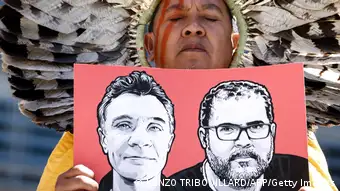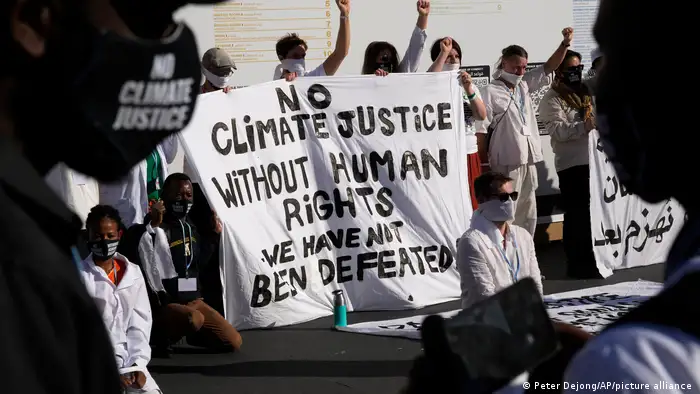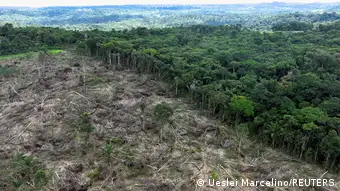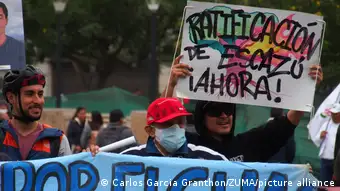insights
Combating environmental destruction with free media
Environmental journalists live dangerously. Yet bearing the accelerating climate crises in mind, their work has never been more crucial. What can be done to support them?
A clean and healthy natural environment is a prerequisite for enjoying human rights, such as the right to adequate food and decent housing, less obvious rights such as freedom of movement, and, ultimately, the right to life. Beyond that, there is increasing recognition that a sound environment is also a human right in itself: Last year, the United Nations General Assembly declared the human right to a clean, healthy, and sustainable environment.
Although the resolution is not legally binding, it can nevertheless serve as a reference point for the human rights and climate movement. Human rights catalogs are not set in stone but rather evolve through international human rights discourse and must respond to current challenges – and climate change is the greatest challenge of the 21st century.
The key role of free media
However, governments are not sufficiently fulfilling their responsibility to climate protection. Despite the new resolution, Amnesty International comes to the sobering conclusion that "governments’ climate action remained woefully inadequate".
Environmental journalism has a pivotal role in effectively implementing human rights. What is required, above all, is independent information, reliable facts, and constructive dialogue. The importance of access to information is also highlighted in the UN resolution: "Recognizing that the exercise of human rights, including the rights to seek, receive and impart information, to participate effectively in the conduct of government and public affairs and to an effective remedy, is vital to the protection of a clean, healthy and sustainable environment."

A member of The Articulation of Indigenous Peoples of Brazil (APIB) holds the image of killed UK journalist Dom Phillips and Brazilian indigenous expert Bruno Pereira
Journalists can be agents of change in fighting climate disinformation, especially at a time when the rise of authoritarian regimes amplifies science denial, including climate change denial. But the safety of journalists remains a major concern. Evironmental journalists face serious threats, as in the case of the killing of journalist Dom Phillips in Brazil last year. At least ten environmental reporters have been killed in the past five years, according to Reporters Without Borders.
Climate defenders stake their lives
Climate journalists and media outlets report not only on the climate catastrophe, but also on climate activism, providing a platform for civil society engagement. Environmental defenders shape climate action worldwide, from Finland to India to Egypt, while being threatened in one way or another. Many have been arrested, injured, and even killed. Research from Global Witness shows that in the past decade, a land and environmental defender was killed every two days, meaning more than 1,700 people. Most of them were indigenous people, and most were in Latin America, a DW analysis shows.
Empowering frontline communities
As stressed in the resolution, the consequences of environmental damage "are felt most acutely by women and girls and those segments of the population that are already in vulnerable situations, including indigenous peoples, children, older persons and persons with disabilities." The right to an intact environment holds great potential for marginalized groups, who are the most affected by the climate crisis and – at the same time – have the least responsibility for it. It is therefore all the more important that groups like indigenous people and local communities participate in a gender-sensitive way in the decision-making processes on international climate policy. And local media are an essential tool for making their voices heard.
Building global networks
Just as the climate crisis knows no borders, international solidarity is needed to tackle regional environmental problems tailored to the needs of local populations. This is where development cooperation enters the picture, and the dangerous terrain for journalists and activists illustrates the relevance of media development to effectively promote environmental journalism.
Media development is also one decisive factor in Latin America’s development trajectory. The Escazú Agreement from 2018, to give one example, is considered a milestone in guaranteeing the right to access environmental information and participation in environmental decision-making, but so far, not all countries have ratified it. That is why we need media development approaches including, amongst others, global research networks, training for the safety of journalists and advocacy for the ratification of environmental agreements.
Sustainable development in practice
Broadening the reach of investigative environmental journalism goes far beyond the media sector, but positively impacts all levels of society: it raises public awareness to counter disinformation, makes activism visible to safeguard climate defenders, unveils environmental crime to hold governments and companies accountable, and puts pressure on politics to gain leverage in advocacy work. Environmental journalism makes the links between human rights and environmental protection evident and serves as a practical example for education for sustainable development, set as a goal in the Agenda 2030.
DW recommends
- Date 20.06.2023
- Feedback: Send us your feedback.
- Print Print this page
- Permalink https://p.dw.com/p/4Skuf
- Date 20.06.2023
- Send us your feedback.
- Print Print this page
- Permalink https://p.dw.com/p/4Skuf



